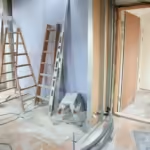A Comprehensive Guide for US Homeowners
Undertaking a home renovation can be one of the most rewarding investments you’ll ever make. Whether you aim to modernize your kitchen, expand your living space, add a luxurious bathroom, or simply give your home a much-needed facelift, a successful renovation can greatly enhance your quality of life and significantly boost your property value. However, the journey from the initial spark of inspiration to the final reveal can be fraught with financial challenges. Understanding the various financing options available can help you navigate this complex landscape with confidence and ease.
Home renovations often require substantial financial resources. For many homeowners, saving enough cash to cover these costs outright is not feasible. This is where financing comes into play. By leveraging different financial products and strategies, you can access the funds needed to complete your renovation without depleting your savings or compromising on your vision. The key is to choose the right financing option that aligns with your financial situation, renovation goals, and long-term plans.
In the United States, several financing options are available to homeowners, each with its own set of benefits, risks, and eligibility requirements. From traditional home equity loans and home equity lines of credit (HELOCs) to cash-out refinancing, personal loans, and government-backed programs, the array of choices can be overwhelming. Each option offers unique advantages, such as lower interest rates, tax benefits, or flexible repayment terms, but also comes with specific considerations that must be carefully weighed.
A home equity loan, for instance, allows you to borrow against the equity you’ve built up in your home, providing a lump sum with a fixed interest rate. This can be particularly advantageous if you need a substantial amount of money upfront and prefer predictable monthly payments. On the other hand, a HELOC operates more like a credit card, offering a revolving line of credit that you can draw from as needed, making it ideal for ongoing or phased renovation projects.
Cash-out refinancing is another popular option, enabling you to replace your existing mortgage with a new one for a larger amount, thereby freeing up cash for your renovation. This can be beneficial if current mortgage rates are lower than what you’re currently paying. However, it also means resetting your mortgage term, which could impact your long-term financial plans.
Personal loans, while typically carrying higher interest rates than secured loans like home equity loans or HELOCs, provide quick access to funds without the need for collateral. This can be a viable option for homeowners with good credit who need to finance smaller projects or prefer not to leverage their home equity. Additionally, government programs and grants may be available for specific types of renovations, particularly those that improve energy efficiency or accessibility, offering further opportunities to secure funding.
Selecting the right financing option requires careful consideration of several factors, including your credit score, existing debt, income, and the scope of your renovation project. It also involves understanding the terms and conditions of each loan product, such as interest rates, repayment periods, fees, and potential tax implications. Consulting with financial advisors, mortgage brokers, or other professionals can provide valuable insights and help you make an informed decision.
This comprehensive guide will explore the various financing options available for home renovations, providing detailed information on each one, including their pros and cons, technical details, and practical tips for securing the best terms. We will also discuss essential considerations for choosing the right financing option and offer strategies to maximize the financial benefits of your renovation project.
By the end of this guide, you will be equipped with the knowledge and tools to finance your home renovation effectively, ensuring that your project is completed on time, within budget, and to the highest standards. Whether you’re a seasoned homeowner looking to undertake a major remodel or a first-time renovator with a modest project, this guide will serve as a valuable resource to help you achieve your renovation goals.
Types of Home Renovation Loans
| Loan Type | Description | Technical Details |
|---|---|---|
| Home Equity Loans | Borrow against the equity in your home. | Fixed interest rates provide predictable monthly payments. Loan terms usually range from 5 to 30 years. Interest on home equity loans may be tax-deductible if used for home improvements (consult a tax advisor). |
| Home Equity Line of Credit (HELOC) | A revolving line of credit based on your home equity. | Variable interest rates can result in fluctuating monthly payments. Draw periods typically last 5 to 10 years, followed by a repayment period of 10 to 20 years. Interest may be tax-deductible if the funds are used for home renovations. |
| Cash-Out Refinance | Replace your existing mortgage with a new one that has a higher loan amount. | Fixed or variable interest rates. Loan terms typically range from 15 to 30 years. Closing costs apply, similar to those of a regular mortgage. Potential tax benefits if used for home improvements. |
| Personal Loans | Unsecured loans that can be used for various purposes, including home renovations. | Fixed interest rates with terms ranging from 1 to 7 years. Loan amounts can range from $1,000 to $100,000, depending on your creditworthiness. Higher interest rates compared to secured loans like home equity loans and HELOCs. Quick approval process, with funds available within days. |
| Government Loans and Grants | Loans and grants for specific renovation projects, often related to energy efficiency or accessibility. | FHA 203(k) loans cover both purchase and renovation costs for a new home or refinance. USDA loans offer financing for rural home improvements. Grants may be available for energy-efficient upgrades or modifications for accessibility. |
Financing home renovations allows homeowners to undertake necessary upgrades and improvements without draining their savings. Proper financing can help you manage costs, avoid delays, and ensure that your renovation project is completed to the highest standards. Additionally, well-planned renovations can increase your home’s market value, providing a return on investment (ROI) that can be beneficial if you decide to sell your home in the future.








